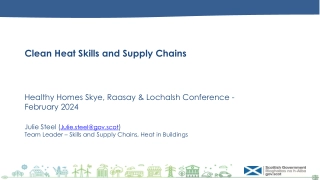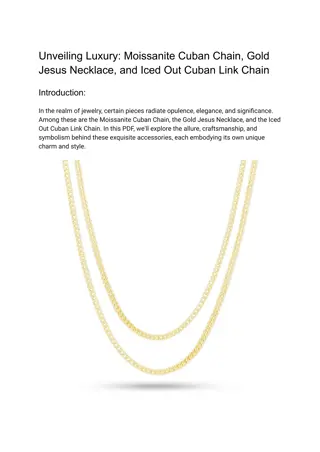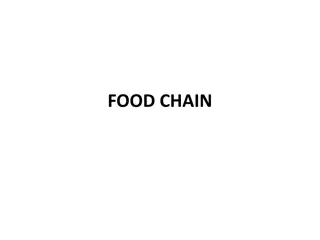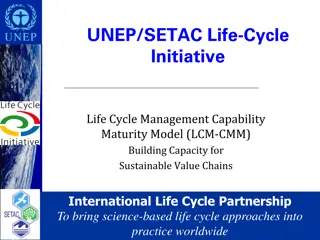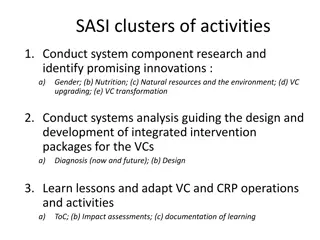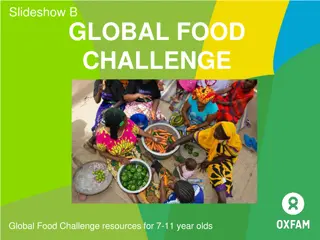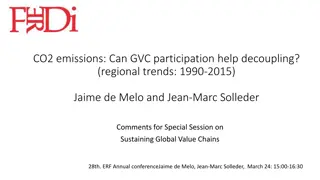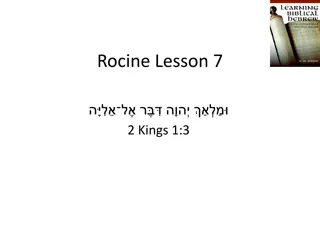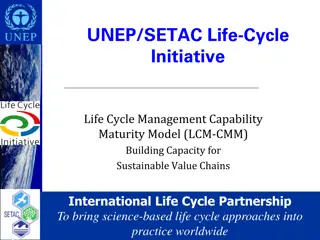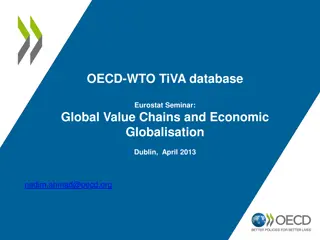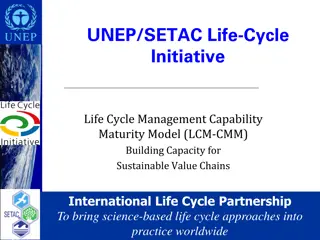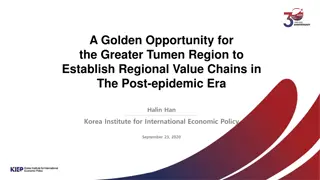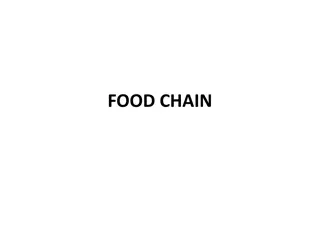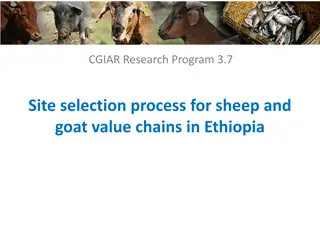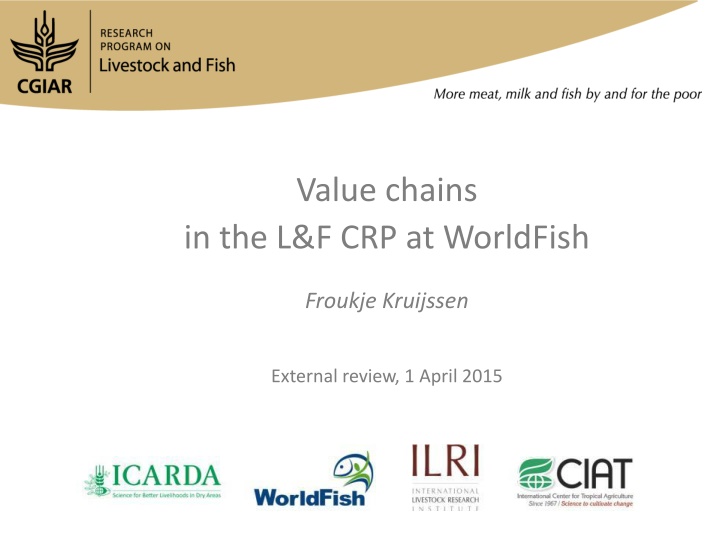
Value Chains Research Agenda at WorldFish
The presentation discusses the research agenda on value chains at WorldFish, focusing on gender inclusion, barriers faced by marginalized groups, necessary interventions for improving value chain performance, effective scaling mechanisms, and impacts on key target groups. The impact pathway aims to enhance income distribution, employment, women's empowerment, and food quality for the poor through various strategies and interventions.
Download Presentation

Please find below an Image/Link to download the presentation.
The content on the website is provided AS IS for your information and personal use only. It may not be sold, licensed, or shared on other websites without obtaining consent from the author. If you encounter any issues during the download, it is possible that the publisher has removed the file from their server.
You are allowed to download the files provided on this website for personal or commercial use, subject to the condition that they are used lawfully. All files are the property of their respective owners.
The content on the website is provided AS IS for your information and personal use only. It may not be sold, licensed, or shared on other websites without obtaining consent from the author.
E N D
Presentation Transcript
Value chains in the L&F CRP at WorldFish Froukje Kruijssen External review, 1 April 2015
Overview of the presentation The value chain research agenda Gender in value chains Outputs, ongoing work and emerging areas Partners Questions and discussion
Research questions What changes in VCs will increase the availability, affordability, and quality of nutrient rich fish for poor consumers? What are the key barriers to women and other marginalized groups gaining greater benefits through participation in value chains? What policy and institutional interventions or changes in the enabling environment are required to improve value chain performance? What mechanisms are most effective for scaling of value chain interventions? What impacts do our value chain interventions have - for women, poor consumers, poor producers and other key target groups? Aligned with the WorldFish research agenda (2015-2017)
Impact pathway of the value chain research agenda Increased and more equitably distributed income and improved employment for poor VC actors Increased control of VC assets and benefits, improved access to high quality inputs and services, and increased decision-making power by women and other marginalized groups Improved quality and diversity in diets of the poor
Impact pathway of the value chain research agenda Increased and more equitably distributed income and improved employment for poor value chain actors Improved quality and diversity in diets of the poor Increased control of VC assets and benefits, improved access to inputs and services, and increased decision- making power Poor consumers buy more nutritious food Improved equity in intra-household distribution of food Scaling of business models, GTA and VC development approaches Testing of GTAs in VCs Improved affordability of nutritious food Increased supply of nutritious food in markets accessible to poor consumers Improved business models, policies and institutions that support VC efficiency and equity Improved quality and food safety of nutritious food available to the poor available to the poor Improved quality and food safety of nutritious food Improved efficiency of value chains supplying poor consumers Improved productivity of fish value chains
Impact pathway of the value chain research agenda Increased and more equitably distributed income and improved employment for poor value chain actors Improved quality and diversity in diets of the poor Increased control of VC assets and benefits, improved access to inputs and services, and increased decision- making power Scaling of business models, GTA and VC development approaches Testing of GTAs in VCs Improved access to output markets for small-scale producers and other VC actors Improved business models, policies and institutions that support VC efficiency and equity Improved productivity of fish value chains
Important components Increasing availability and affordability of fish products for poor consumers Enhancing equitable participation of poor men and women in value chains and the benefits they derive Improving productivity transport and processing inputs and services marketing production consumption DISCOVERY Using, developing and testing different types of tools for qualitative and quantitative VC analysis, assessing postharvest losses, institutional economics Understanding constraints in the institutional environment, including gender and social norms and policy frameworks Foresight analysis to understand demand and supply trends Systems analysis for ex ante impact assessment DELIVERY Testing and refining gender integrated best bet interventions Bringing value chain actors together through innovation platforms Assessing the most effective scaling pathways for our value chain work
L&F gender strategy: on the continuum between accommodating and transformative approaches Source: CARE s women empowerment framework
Gender transformative approach in value chains: key concepts Feed sellers (small & medium) Producers M/F (poor) Consumers M/F Intermediaries M/F Retailers M/F Hatcheries / nurseries Service providers Institutional framework, esp. social and gender norms Influences conditions of engagement in the VC - Roles and responsibilities, trade-offs between activities - Access and control over production assets and resources - Access to knowledge & information, decision-making power - Power relations in the value chain Benefits of participation & Access and control over those benefits (income, nutrition) Decide the outcomes of engagement
Application in Bangladesh carp, tilapia, mola VCs Value chain assessment and gender and social analysis (transcripts being finalized, analysis to start mid-April, report expected in June): What is the state of the system in terms of production systems, species, products, market channels, roles and responsibilities, inefficiencies and bottlenecks. How is the state of the system different for men and women? What are the root causes for inefficiencies and bottlenecks? What are the root causes for differences between men and women including in the wider social context ? How can the root causes for bottlenecks and differences between men and women be addressed? Testing a new set of tools integrating a gender transformative approach into value chain analysis
Some WorldFish legacy outputs Research around governance and upgrading in value chains: What shapes food value chains? Lessons from aquaculture in Asia. Food Policy (2014) 49-1: 228 240. The Blue Revolution in Asia: Upgrading and Governance in Aquaculture Value Chains. World Development (2014) 64: 52 64. Certify Sustainable Aquaculture? Science (2013) 341: 1067-1068. Governance of Global Value Chains in Response to Food Safety and Certification Standards: The Case of Shrimp from Vietnam. World Development (2013) 45: 325 336.
L&F value chain outputs - Global Major efforts put into value chain tools: Value Chain Assessment: qualitative, describing the value chain, understanding bottlenecks and opportunities, identifying potential best-bets (also applied in adapted form in AAS CRP) Value Chain Benchmarking; quantitative, measuring performance in the value chain, baseline GTA tools (being tested in Bangladesh)
L&F value chain outputs - Egypt Value chain analysis of Egyptian aquaculture The market for Egyptian farmed fish Egypt small and medium-scale aquaculture value chain development: past trends, current status and likely future direction (Situational analysis) Institutional, Policy and Regulatory Framework for Sustainable Development of the Egyptian Aquaculture Sector Value chain analysis of the Egyptian aquaculture feed industry (report & journal article) Development of the aquaculture value chain in Egypt: Innovation platform meeting report Informal fish retailing in rural Egypt: opportunities to enhance income and work conditions for women and men The role of farmed fish in the diets of the resource-poor in Egypt
L&F value chain outputs - Bangladesh Value chain analysis of shrimp, prawn and tilapia & feasibility analysis brackish water sea-bass in the southern region in Bangladesh (FtF AIN) Assessment of the carp seeds value chain in southern Bangladesh Bangladesh (FtF AIN) Literature review of selected aquaculture value chains in Southern Bangladesh Improving aquaculture feed in Bangladesh: From feed ingredients to farmer profit to safe consumption Bangladesh small and medium-scale aquaculture value chain development: past trends, current status and likely future direction (Situational analysis) Aquaculture, employment, poverty, food security and well-being in Bangladesh: a comparative study Is aquaculture pro-poor? Empirical evidence of impacts on fish consumption in Bangladesh
Ongoing work in 2015 Egypt: Ongoing impact assessment along the entire value chain (IEIDEAS): quantifying the impact of value chain interventions (reports, publications, Phase 2 proposal) Writing up peer reviewed publication on the Egypt retailer study Bangladesh: Value chain and social and gender analysis in Bangladesh: analysis, identification of best bets, peer reviewed publication Gender integrated feeds VC analysis (MDQF) Assessment of input and service supply models (AIN) Understanding of consumption and poor consumers (GIZ) Global: Manual for GTA tools for the value chain
Emerging/ growing research topics Moving from more qualitative to more quantitative approaches in value chain analysis The value chain upside down / Bottom of the Pyramid : Understanding the value chain from a poor consumer perspective. What do poor consumers desire and need and how can we make fish more accessible, affordable and of better quality for this consumer group? Dried fish value chains (important for food security, nutrition, employment and income in both SSA and South Asia) Interactions between value chains of aquaculture and capture fisheries especially in SSA
Partners Royal Tropical Institute (KIT) gender in value chains, innovation platforms CARE (Egypt) empowerment of women retailers Solidaridad - exploring to build a learning agenda around value chains, co-development of a market research agenda Helen Keller International (Bangladesh) consumption
CGIAR Research Program on Livestock and Fish livestockfish.cgiar.org livestockfish.cgiar.org CGIAR is a global partnership that unites organizations engaged in research for a food secure future. The CGIAR Research Program on Livestock and Fish aims to increase the productivity of small-scale livestock and fish systems in sustainable ways, making meat, milk and fish more available and affordable across the developing world.

